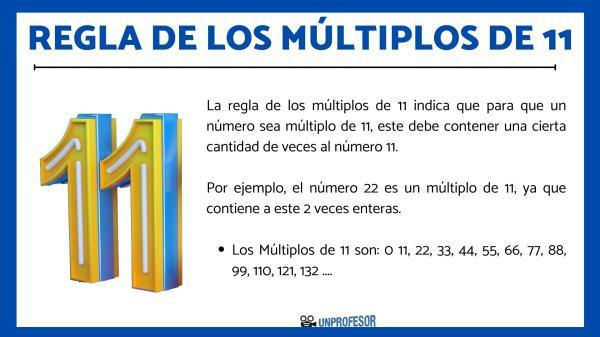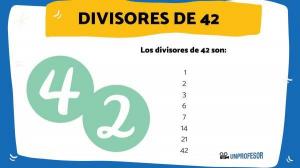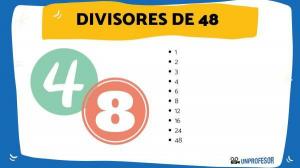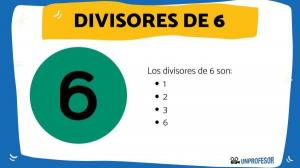Rule of MULTIPLES of 11

The rule of multiples of 11 It is a very simple way to find out which numbers greater than 100 are their multiples. The Multiples of 11 are: 0 11, 22, 33, 44, 55, 66, 77...
In a new lesson from a Teacher we will learn the rule of multiples of 11. We will start with the difference between multiples and divisors, then we will see the rule in detail along with some examples, to finish with some exercises. At the end we will add the divisibility criterion of the number 11.
When we talk about multiples and divisors we are referring to two concepts that are related to each other.
- On the one hand, we know that a number will be a divisor of another number, if the division between them returns as result an integer and its remainder zero. That is, if a number is contained within it an integer number of times.
- While on the other hand, A number will be a multiple of another number if it occurs within it an integer number of times.
For example, if we say seven twice is equal to fourteen, it is the same as saying that seven is twice contained in fourteen.
In this case we can say that if seven is a divisor of fourteen then fourteen is a multiple of seven. In the same way we can think about it with the number two.
Here we tell you how to get multiples of a natural number.

The rule of multiples of 11 indicates that for a number to be a multiple of 11, it must contain a a certain number of times to the number 11. For example, the number 22 is a multiple of 11 since it contains 2 whole times.
Now, if we want to know which numbers are multiples of 11, there are several ways to check it. Here you have them:
- The most difficult is dividing the number in question by 11, if the result is another integer and the remainder of the division is zero, then it will be a multiple, otherwise not.
- When the numbers are less than 100 It is very easy to know whether or not they are multiples of 11, since the numbers that are are those that have the same two digits, that is, 11, 22, 33, 44, 55, 66, 77, 88 and 99 .
- When the numbers are greater than 100, There is a very simple rule to check it, and it is the following: You start by adding the first number, then the next one is subtracted, for the third we add again, the fourth is subtracted, and so on successively. If the result of the count is zero or a number divisible by 11, then we find a multiple of 11.
Example
Let's use the rule in an example to check it.
We want to find out if the number 121 is a multiple of 11, then:
1 - 2 + 1 = 0
Since the result we got is 0, then 121 IF is a multiple of 11.
We want to find out now, if the number 325 is a multiple of 11, then:
3 - 2 + 5 = 6.
Since the result is 6, then the number 325 is NOT a multiple of 11.
The Divisibility criteria They are a practical tool that is used to quickly know if a number is divisible by 11 or not in this case. The divisibility criterion of 11 is precisely what we use to know if a number is a multiple of it or not.
“A number is divisible by 11 if and only if the alternating addition and subtraction of its digits returns zero or a multiple of eleven as a result.”

Here we leave you different exercises on the rule of multiples of 11 so you can practice at home. We also leave you the solutions for you to check.
Exercise 1
Are the following numbers multiples of 11?
- 330
- 896
- 67925
- 14753
- 698752
- 101354
Solutions
- Is 330 a multiple of 11? We apply the rule of multiples of 11 to answer.
- 3 - 3 + 0 = 0Since the result is zero, then 330 IF is a multiple of 11.
- Is 896 a multiple of 11? We apply the rule of multiples of 11 to answer.
- 8 - 9 + 6 = 5Since the result is five, the number 896 is NOT a multiple of 11.
- Is 67925 a multiple of 11? We apply the rule of multiples of 11 to answer.
- 6 - 7 + 9 - 2 + 5 = 11Since the result is 11, then 67925 IF is a multiple of 11.
- Is 14753 a multiple of 11? We apply the rule of multiples of 11 to answer.
- 1 - 4 + 7 - 5 + 3 = 2Since the result is two, 14753 is NOT a multiple of 11.
- Is 698752 a multiple of 11? We apply the rule of multiples of 11 to answer.
- 6 - 9 + 8 - 7 + 5 - 2 = 1 Since the result is 1, it is NOT a multiple of 11.
- Is 101354 a multiple of 11? We apply the rule of multiples of 11 to answer.
- 1 - 0 + 1 - 3 + 5 - 4 = 0 Since the result is zero, SI is a multiple of 11.
Exercise 2
Are the following statements true or false?
- The number 548 is a multiple of 11.
- The number 495 is a multiple of 11.
- The number 5786 is a multiple of 11.
Solutions
- Fake. We apply the rule of multiples of 11 and obtain:
- 5 - 4 + 8 = 9. Since the result is 9, it is NOT a multiple of 11.
- TRUE. We apply the rule to check it:
- 4 - 9 + 5 = 0. Since the result is 0, SI is a multiple of 11.
- TRUE. We apply the rule and obtain:
- 5 - 7 + 8 - 6 = 0. Since the result is 0, SI is a multiple of 11.



